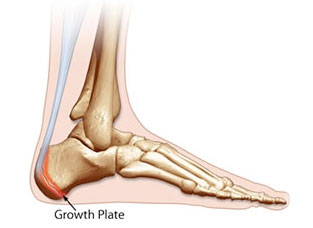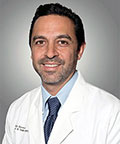- Home
- Foot & Ankle Conditions
- Pediatric Conditions
- Growth Plate Fractures
Growth Plate Injuries: Causes, Symptoms, & Treatment Options

What are Growth Plates?
Growth plates, also known as epiphyseal plates, are soft points on the end of a child's bone that form solid bone as your child matures. Growing bones each have one growth plate at either end.
A suspected injury to the growth plate needs to be evaluated by a specialist right away. An injury to a growth plate can cause it to harden and “close” prematurely, meaning it stops producing new bone before your child is done growing. If left untreated, a growth plate injury could stunt bone growth.
- How common are growth plate injuries?
- How do growth plate fractures of the foot occur?
- What are the symptoms of a fractured growth plate?
- How can the podiatrists at University Foot & Ankle Institute diagnose your child's growth plate injury?
- What are the common types of growth plate fractures?
- What are the treatments for a growth plate foot fracture?
- Recovering from a growth plate fracture
- Choose UFAI for the best pediatric podiatrists
- Growth plate injury FAQs
- Can adults suffer growth plate injuries?
- Can you play soccer on a growth plate ankle injury?
- Does growth plate injury affect height?
- How to prevent growth plate injuries?
- How long does a growth plate injury take to heal?
-
Foot and Ankle Surgeon and Director of University Foot and Ankle Institute
Dr. Bob Baravaria DPM, FACFAS is a Board-Certified Podiatric Foot and Ankle Specialist. He is an assistant clinical professor at the UCLA School of Medicine and serves as Director of University Foot and Ankle Institute.
Dr. Baravarian has been involved in athletics his entire life and played competitive tennis in high school and college. He has an interest in sports medicine, arthritis therapy, and trauma/reconstructive surgery of the foot and ankle. He is also fluent in five languages (English, French, Spanish, Farsi, and Hebrew),
 I always come here and see Dr briskin to get my orthotics he's a wonderful doctor great bedside manner doesn't play any games d...Eric A.
I always come here and see Dr briskin to get my orthotics he's a wonderful doctor great bedside manner doesn't play any games d...Eric A. Great experience. Great communication. Great direction for my care. Very happy I chose to go with this particular doctor and o...Christopher R.
Great experience. Great communication. Great direction for my care. Very happy I chose to go with this particular doctor and o...Christopher R. Great service and care. Highly recommend Dr. Franson.David B.
Great service and care. Highly recommend Dr. Franson.David B. Easy check in. Did not wait hardly at all for my exam. Very professional and knowledgeable.Cortisone shot almost took all the ...Alec M.
Easy check in. Did not wait hardly at all for my exam. Very professional and knowledgeable.Cortisone shot almost took all the ...Alec M. If you have to go see a Doctor than this is a great experience.Frank M.
If you have to go see a Doctor than this is a great experience.Frank M. My doctor was great. Really greatRudolph B.
My doctor was great. Really greatRudolph B. Good.David E.
Good.David E. Dr. Franson is the only podiatrist I will see. He is so personable and such a caring doctor. I always feel like he makes time f...Nic W.
Dr. Franson is the only podiatrist I will see. He is so personable and such a caring doctor. I always feel like he makes time f...Nic W. Your Santa Barbara office and Dr. Johnson always give me excellent care!Jayne A.
Your Santa Barbara office and Dr. Johnson always give me excellent care!Jayne A. Dr. Gina Nalbadian was amazing!! I came in with an emergency foot situation and she had wonderful bedside manner and resolved m...Danielle C.
Dr. Gina Nalbadian was amazing!! I came in with an emergency foot situation and she had wonderful bedside manner and resolved m...Danielle C. I was frustrated that after 3 weeks I still hadn’t heard back about my PT referral status. And I did sit in a room for over 30 ...Sarah C.
I was frustrated that after 3 weeks I still hadn’t heard back about my PT referral status. And I did sit in a room for over 30 ...Sarah C. I’m very pleased with Dr. Kelman.Alan S.
I’m very pleased with Dr. Kelman.Alan S.
